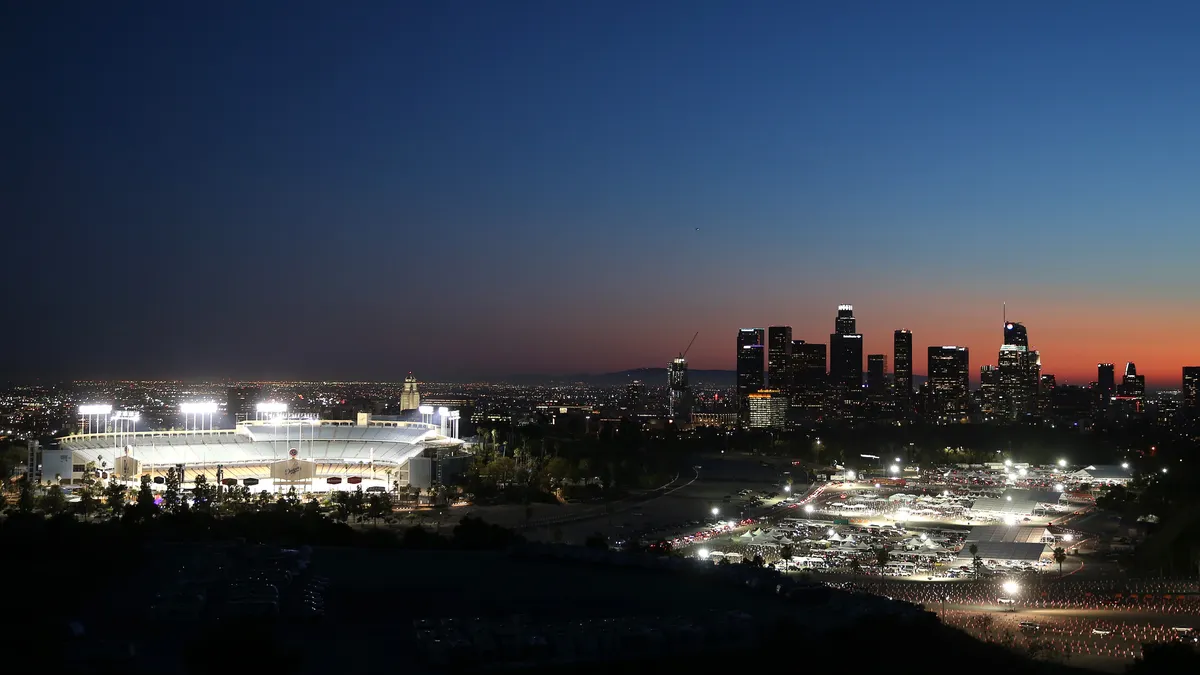Dive Brief:
- New storage resources and demand response efforts could help bolster California's grid and avert blackouts during the summer months, experts and advocates said Tuesday, even as the California Independent System Operator (CAISO) warned of the possible need for energy conservation this week in light of record-breaking temperature forecasts.
- The grid operator has additional resources this summer that it did not have last year, much of which is energy storage, Senior Vice President and Chief Operating Officer Mark Rothleder said during a webinar Tuesday, "and those resources will be really important to deliver on those hours when we saw the most stress last year."
- Meanwhile, demand response program OhmConnect on Tuesday announced a campaign to offer smart thermostats to 1 million state residents as part of a broader effort to prevent blackouts during the summer.
Dive Insight:
CAISO on Tuesday sent out a call for customers to be ready to conserve energy, noting that high temperature forecasts, which extend until the weekend, could strain the grid during the evening hours, when solar generation is shrinking and air conditioner use is high.
The operator's projections indicated electricity demand could exceed guaranteed resource adequacy supplies on several days. On Thursday night, for instance, it forecasts that demand will be 3,374 MW more than the resources it expects to be available under the state's resource adequacy framework. However, CAISO noted in an update later in the day that it did not expect rotating power outages this week.
"Supplies will be tight in the evenings for the next several days, but our market is expected to make up any difference between demand and supply, and we currently predict enough reserves on hand to cover demand," the ISO said.
Last year, CAISO observed that the critical hours for the grid tend to be during the net peak — roughly 6 p.m. to 8 p.m. — when solar production begins to shrink, Rothleder noted.
"Had we had additional batteries that we could have used during that time … it may have made the difference last year," he added.
This year, CAISO anticipates that 1,493 MW of battery energy storage systems will come online from June through Sept. 1. They largely comprise four-hour batteries, which could help get the grid through that evening net peak, Rothleder said, but the challenge is that, unlike a gas resource that can be dispatched when needed, the operator needs to manage the batteries so that they are fully charged for the evening hours.
This offers "an opportunity to show how it's done — no one else has this battery [capacity] at this scale for system conditions, so we're excited to show how these really are the tools of the future to operate the grid reliably," he added.
In the longer run, the ISO wants to continue to adapt optimization tools to ensure that batteries are deep cycling — absorbing extra solar power during the day and discharging it into the peak — naturally and in an economic way, Rothleder said.
Utility-scale battery developers are moving quickly to get projects online, as factors like heat waves, wildfires and tropical storms pose threats to the grid, a new analysis from S&P Global Market Intelligence noted. Current plans indicate that by the end of August, installed utility-scale storage capacity — excluding pumped hydro storage — could touch 5,582 MW, a 185% increase over the last year. California and Texas would represent three-quarters of that capacity, with the former housing 2,800 MW — mostly four-hour lithium-ion batteries — before September, and the latter 1,400 MW.
Separately, OhmConnect on Tuesday announced a campaign to offer smart thermostats to one million residents in California. Adjusting thermostats by a few degrees during peak periods could save 680 MW of energy, the provider said — roughly twice the energy that a typical power plant produces.
OhmConnect's demand response network saved almost 1 GWh of energy during the heat waves that occurred in California last August. The new effort would allow residents to save four times more energy, according to the company.
The 2020 blackouts highlighted to state energy agencies the opportunities and challenges for demand response, Siva Gunda, commissioner at the California Energy Commission, said at a press conference announcing the campaign.
"I think it's a pretty strong consensus across all the agencies that DR is going to play a very important role moving forward, both in the short term but also in the long term," he said.













